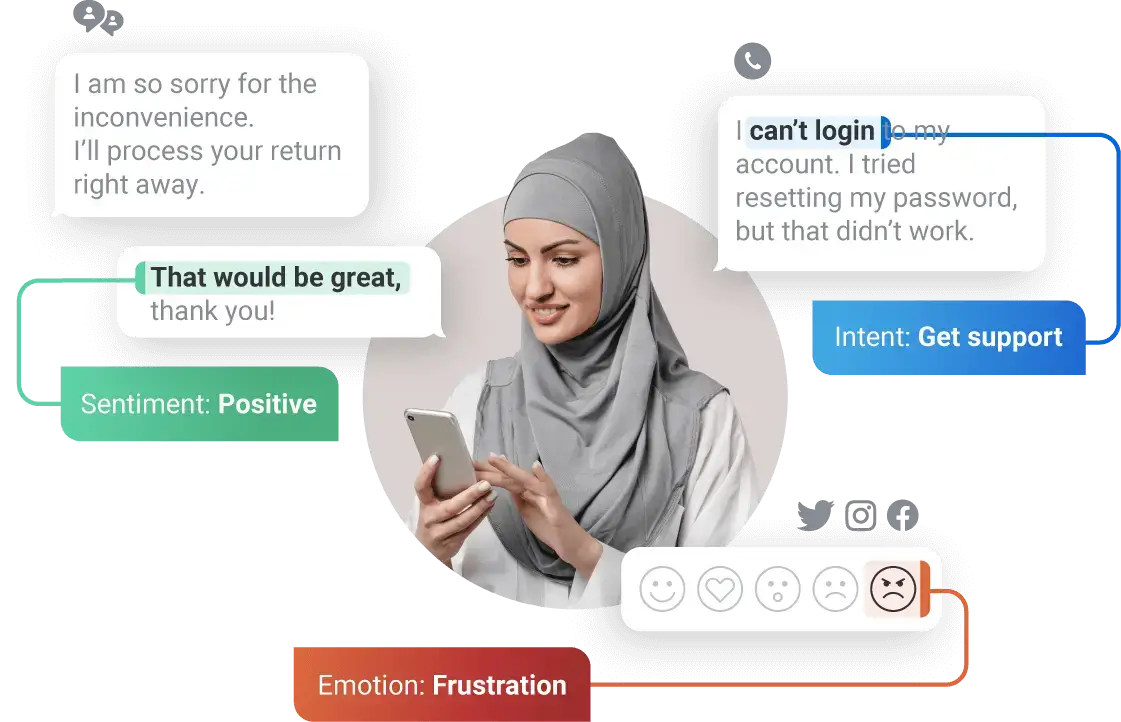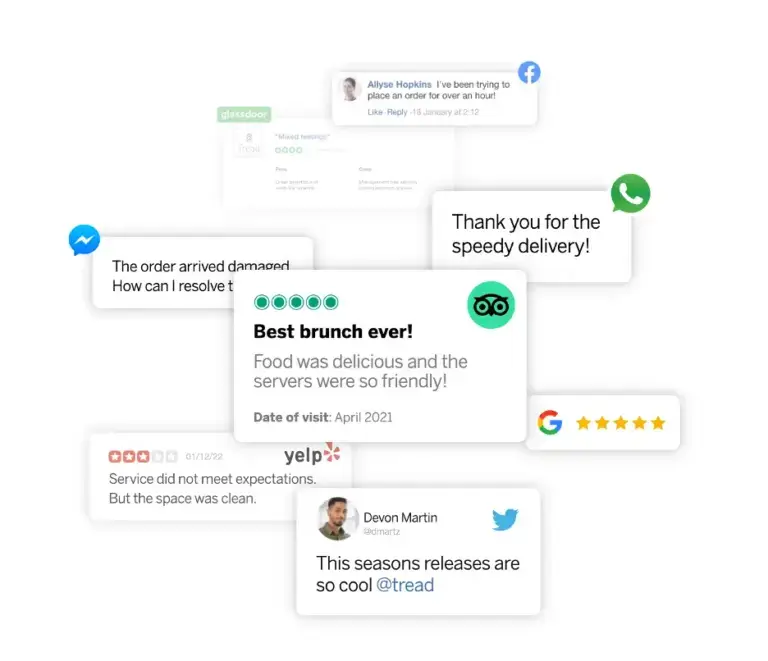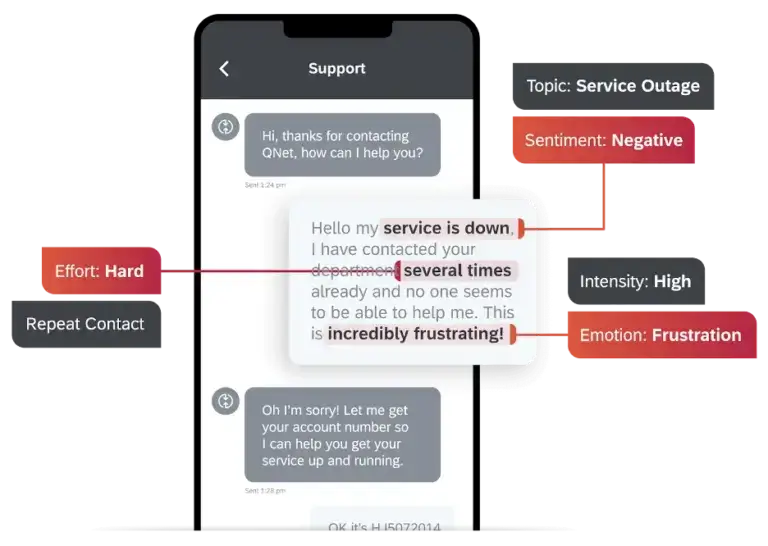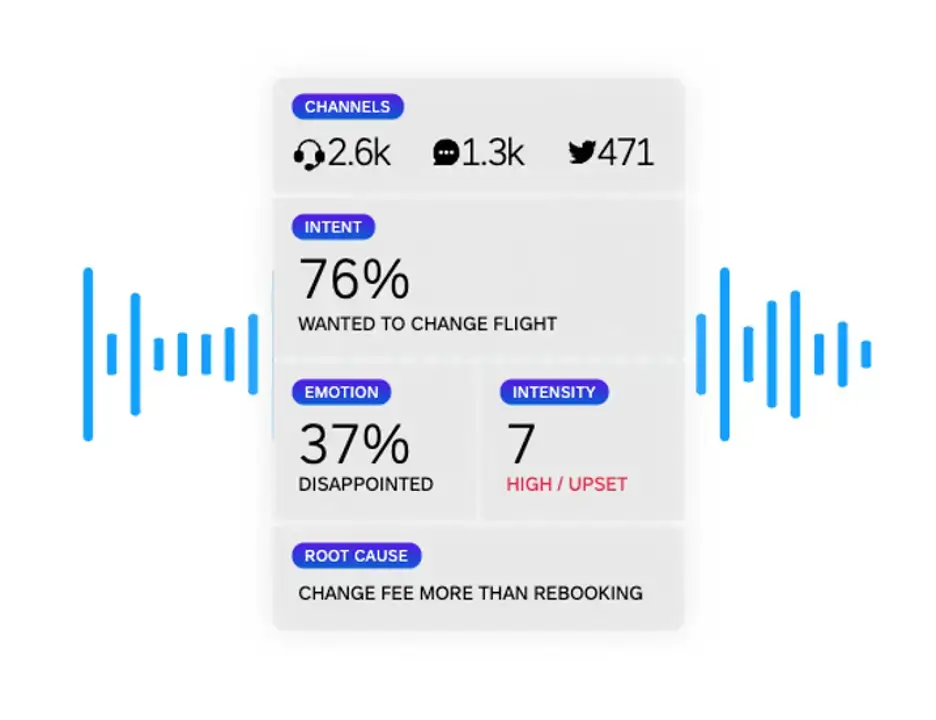Author: Adam Bunker
Subject Matter Expert: Koren Stucki
What does churn mean in business?
Let’s start with the basics: churn is the term used when customers stop buying products or services from a business. If a customer base drops off a cliff in a short spell of time, that’s a whole lot of churn. If a single customer forgets to update their credit card details and their subscription lapses, that’s churn too.
Churn is a metric that skews in the opposite direction of customer loyalty. When you’re looking to measure it, you block out a specific period and calculate all the customers who’ve moved on – turning that into a percentage of total customers will give you your churn rate.
Crucially, if you want to grow, you’ll need to minimize churn – the rate at which you win over new clients needs to be higher than the rate at which your existing ones churn.
Discover the 2024 trends keeping customers returning time & time again
Why is churn important?
Churn is really important to keep track of for a range of business reasons. There’s an oft-repeated fact that it costs up to five times more to attract a new customer than it does to keep one, but if you’re not paying attention to the ones that stay – and work to make things better for them – you’ll be losing out on much more than acquisition costs.
Gartner, for instance, posits that some 80% of a company’s future revenue is likely to come from only 20% of its customer base – which means it pays to keep as many customers as you can, and to do what you can to drive up loyalty and reduce customer churn on an ongoing basis.
In other words? Your existing customers are your most valuable customers – so keeping them onboard and happy should be priority number one.
What does churn have to do with retention?
They’re polar opposites, really. Your retention rate describes the number of existing customers who’ve made repeat purchases or renewed their subscriptions. Customer churn accounts for those that don’t.
There’s a range of reasons behind churn and a similarly broad list of reasons why customers stay with you, but they all boil down to how well you’re listening to your customers’ needs and managing every part of the customer experience as a result.
Churn can be like a constantly dripping tap or it can be a flood that evens out after a while – and different kinds of churn have different drivers.
The product onboarding phase can be a key driver of a churn spike, for example, if customers can’t find the value they’re looking for as quickly as they’d like. In B2B, a key driver of churn could be that the person in the client business who champions your product leaves and is replaced by someone with a different preference.

What are the four types of churn?
Exactly what drives any given customer to churn will be unique to that individual or client, but there’s a common structure to churn that allows us to break it out into a couple of core types:
Proactive/Voluntary
Proactive churn is where customers make a voluntary choice to move away from your business. A good example of this is when an annual subscription period comes to an end and they make the choice not to renew – maybe because there’s a better option out there. But the same theory applies outside of the SaaS world, too. A customer who’s always had iPhones but switches to Android would count as a churned customer for Apple.
Whatever the case, proactive churn suggests that there are areas of your offering that need to be improved.
Reactive/Involuntary
Reactive churn happens when customers might not even realize that they’ve churned. This more passive kind of customer churn typically occurs when they fail to update their billing information and/or a card expires. It’s estimated that this accounts for some 5% of customer churn in subscription-based businesses.
Beyond proactive and reactive, we also can look at two different metrics when we discuss churn: customers and revenue…
Customer churn
Customer churn is the rate at which customers or users stop doing business with you over a given time. You can work this out by dividing the number of churned customers (at the end of the period) by the number you had at the start and multiplying that by 100. For example, if you started a quarter with 1000 customers and ended it with 800, then you’d run 200/1000 x 100 = 20%.
Revenue churn
Revenue churn describes the amount of monthly recurring revenue lost from canceled subscription renewals in the given time frame – including from customers who downgraded their plans. It’s the same calculation as above – the end figure divided by the start figure, multiplied by 100.
Is there such a thing as ‘good’ churn?
While it’s always a good idea to look out for ways to proactively reduce customer churn, there are some instances where churn isn’t necessarily terrible. If a customer has been using your tool or product for specific, short-term goals, then they might churn after having achieved customer success – which means they may come back again in the future.
On the other end of the spectrum are bad-fit customers. Sometimes, perhaps through a big marketing push, businesses grow too quickly and achieve a level of unsustainable growth by acquiring a ton of customers who aren’t necessarily the right fit for the product.
In this case, churn will help that business scale back down toward more sustainable growth – with more positive customer acquisition costs – and a user base that actually needs the product.
What is churn reduction management?
Churn reduction management is the process of identifying key drivers of customer churn and working to proactively fix them.
But this is much more than just ‘damage control’. Letting churn rates grow unchecked can be disastrous for any business, so boosting customer retention means that every part of the entire customer experience – from your digital experience to you your customer support to your physical stores – needs to be constantly monitored and improved.
To reduce customer churn rate you’ll need to understand its many causes. These will be different for every customer, but they will point to common experience gaps and trends that can help whole businesses transform for the better.
In that way, managing churn and keeping your existing customers is really the same job as building better CX – a job that will also help you attract new ones.
How to reduce customer churn
Research from Esteban Kolsky, CEO of thinkJar, found that for every one customer who leaves a complaint, 25 will up and leave without saying a word. That means it’s important to understand pain points that lead to customer churn before it’s too late.
To reduce churn is to fix issues that drive dissatisfaction, and doing that is a three-part process:
1. Go beyond survey feedback
Customer surveys have been a reliable go-to for decades when it comes to understanding customer experience. They’re not going anywhere just yet, but let’s face it: surveys only give us a glimpse of the whole picture. They’re like looking in the rearview mirror, where we can only see a problem after it’s already happened.
So while surveys are great for strategic insights, they can fall short when it comes to being proactive. Moreover, they only capture a fraction of customer sentiments, leaving a massive amount of interactions, opinions, and experiences uncaptured.
In today’s digital landscape, we have a treasure trove of behavioral cues at our disposal. From dead-end clicks to mouse thrashing and even rage-clicking, we can uncover valuable frustration markers across a wealth of human behaviors. We can also analyze social media posts, reviews, forum threads, and every corner of the internet where people are buzzing about your organization.

In contact centers, we can capture and analyze interactions across calls, chats, chatbots, and emails to gain deep insights into customer intent, sentiment, effort, and emotional intensity.
And by including both customer and agent voices in these conversations, we can enhance agent quality, ensure compliance, and deliver purposeful coaching. And don’t forget about physical locations like stores, branches, and hotels. Social media comments, Google Places reviews, TripAdvisor ratings, and online forums like Reddit are really just the tip of the iceberg.
In physical spaces, feedback from things like kiosk intercepts, strategically placed QR codes, and geofencing triggers can help you tap into the thoughts and emotions of every customer, gaining richer insights into their actions and feelings at every step of their journey.
Ultimately, the aim here is to use the technology available in today’s CX environment to tune in to what your most valuable customers are saying and feeling – in real time across all customer touchpoints.
2. Understand every signal
Once you start to bring in that all-important unstructured data, you need to be able to make sense of it if you want to boost customer retention and reduce customer churn.
The key is to separate the signal from the noise – at scale. And that’s where Artificial Intelligence (AI) comes in.
AI that’s been trained on experience data can make sense of feedback from every source, so you can learn from every interaction as they happen and use what you learn to work on customer retention. And it’s this AI-powered analysis that’s ushering in a new era of customer experience; with it, we can now understand a customer’s intent, sentiment, effort, and emotional intensity by inferring it from their language or behavioral signals.

We call these signals ‘markers’ – they link directly to business outcomes, like customer lifetime value, brand loyalty, and cost reduction.
At an individual customer level, this technology means you no longer need to rely on asking customers how an experience went – you’ll already know when things aren’t going the way they should. That opens up the possibility to move away from retrospective ‘fixes’ and enables you to be proactive and take action to reduce friction and frustration before it results in churn or costly issue resolution.
3. Turn insights into enterprise-wide assets
Today’s customer experience has evolved beyond individual teams into an enterprise-wide program, serving as an open hub of insights that the entire organization can leverage.
And when you structure your CX program to provide value beyond just those direct feedback channels, you can drive innovation and customer success across the business that will directly influence customer retention, including:
- Operational Efficiency
- Agent and Service Quality
- Customer and Agent Satisfaction
- Cost Reduction
Ok, so… how? Well, the key is to be able to distribute data and insights across teams, so that they can be harnessed by every part of the organization. Here are a few examples:
Digital Teams: Your digital experience teams can tap into insights that arise from frequently raised topics and issues, and use this knowledge to optimize content and features.
Product Teams: By identifying trending product needs and issues that prompt customer churn, product development programs can drive continuous improvement and better align offerings with customer expectations.
Sales Teams: Understanding which customer behaviors drive customer spend, loyalty, upsell, and cross-sell helps sales teams undergo targeted training, maximizing their effectiveness and driving revenue growth.
Marketing Teams: With a more comprehensive understanding of the customer journey, marketing teams can optimize campaigns, content, and messaging.
By leveraging the wealth of data collected from the contact center, your organization can tap into a vast reservoir of customer insights to build a more customer-centric culture throughout the enterprise.
Understanding churn as part of the bigger picture
Churn as a metric is just one part of the equation. But the good news is that when you’re enacting strategies to reduce it –and keep your most valuable customers – you’ll also be enabling a bunch of other business outcomes.
Utilizing omnichannel analytics to its fullest will also help you improve customer satisfaction and loyalty, for example. Likewise, when you improve your core customer service quality, you’ll also be driving down operational costs and boosting efficiency, which will have positive knock-on effects on your reputation.
Crucially, all of this revolves around reducing customer friction. When you really listen to your customers across every touch point and understand every signal, you’ll be removing points of frustration – like the inability to complete a transaction, for example – and optimizing their journeys. That alone can reduce customer churn, but it also builds brand perception and generally improves your products and processes.

Managing churn is a win-win, in other words. And it doesn’t need to be difficult.
The value of omnichannel CX suites like Qualtrics® is that they can ingest every type of customer feedback there is, alongside relevant operational data, and bring it all together into one hub. With that, you can then apply advanced analytics and AI for a much deeper and more holistic understanding of the customer experience.
That ability paints a vivid picture of pain points and areas for improvement. What’s causing frustration that could ultimately lead to churn if not addressed? What’s making customers happy? Understanding these points on a customer-by-customer basis is what ultimately drives retention and the likelihood for customers to recommend a brand to someone else.
Remember, though: it’s what you do with that insight that counts.
Having the ability to collect solicited and unsolicited feedback alongside conversational data in one place is a powerful way to break down silos so that product, marketing, care, and CX teams can all use those insights to improve the customer journey and overall experience.
And, as a result, reduce customer churn.
Discover the 2024 trends keeping customers returning time & time again